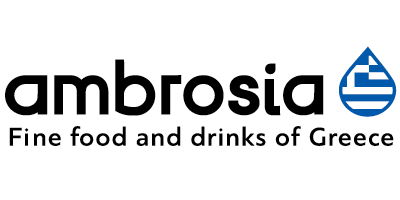According to official data, Feta cheese has been one of the unsung heroes of the COVID-19 pandemic, a hit with consumers all across the world. The numbers don’t lie: €398,061,040 in export value amounting to 9.1% increase, in just one year.
Story: Vana Antonopoulou
The COVID-19 pandemic has placed unprecedented stress on food supply chains, with bottlenecks in farm labour, processing, transport and logistics, as well as shifts in demand. Most of these disruptions are a result of lockdowns and closures of restaurants, adopted to contain the spread of the virus. And although foodservice has and still is struggling to come to terms with the new normal, retail demand for food has soared.
At the same time, COVID-19 has led to a drastic shift in consumer demand and habits: away from restaurants and other types of “food away from home” towards food consumed at home, and from fast food choices to health-conscious and nutritious options.
As an integral component of the Mediterranean diet, Feta cheese is therefore considered a healthy cheese choice and as a result, demand has increased leading to a rise in exports from the main —and authentic— Feta production point: Greece.
The COVID-19 factor and a rise in exports
With the COVID-19 pandemic, things were and still are volatile at best. Especially in the F&B sector where health, safety and security play a key role.
“This pandemic is something that none of us had experienced before and has radically changed everyday life in all its facets. The first four months of 2020 were especially difficult with the lockdown and the closing of the borders”, explains Mr Hotos Ioannis of Hotos SA, a Greek company exclusively engaged in cheese-making for three generations, which combines almost a century’s worth of know-how with a privately-owned, state-of-the-art dairy unit in order to ensure the superior quality of its products and especially its Feta cheese.
However, Feta cheese managed to withstand the challenge of the times. In fact, according to official data provided by the the Greek Exporters Association, Greek cheese exports were up approximately 13.2% in 2020, while Feta exports amounted to €398,061,040 compared to €365,025,010 in 2019 (for the period January-November 2020 and 2019, respectively), thus showing a 9.1% increase. And while certain classic Feta cheese destinations were low on imports (the UK was -0.1%, Italy -4.4% and Sweden -4.5% from the previous year), others such as France (+34.1%) or the USA (+16.4%) showed a dynamic growth, whereas 69.9% of total Feta export share went to just 5 countries.
As Mr Hotos affirms, “Shortly after the start of the pandemic, the markets reacted calmly and managed to return to a steady pace, creating the right conditions for the increase of exports. So, Hotos SA exports were up in 2020. In fact, last year we started exporting to large markets such as Australia. We believe that our forty years of export experience as well as the consistently top quality of our products have contributed greatly to the growth of our sales on an international level”.
The “Feta” problem
Feta cheese lies in the heart and soul of Greek cuisine and Greek producers have strict regulations regarding Feta, including the stipulation that at least 70% of the product be made of sheep milk. The remainder can be made of goat milk. Local flora, animal breeds, and traditional production techniques all have a significant impact on the texture, flavor and aroma of Feta. As a result, the firmness, texture and flavor differ from region to region.
Unfortunately, several countries such as France, Bulgaria, Germany, Denmark and even the US are currently producing bland Feta cheese imitations, not only in flavor and organoleptic characteristics, but also in health benefits.
“Feta is Greek and has been recognized as a PDO product by the EU since 1996. Of course, there are many white cheeses produced in other countries that are appropriating the Feta name and this has definitely hurt exports, since not everyone knows that the authentic Feta is in fact Greek. The biggest problem lies in countries where the EU quality protection schemes do not apply, such as in the US and Canada”, states Mr Hotos. “To face this problem, Greek companies and Hotos in our case, uses quality ingredients and maintains high production standards in order to ensure constantly a standard flavor”.
“The real thing is always the best,” he insists. “Feta was born in Greece and surely here we know the secret to the best Feta. Moreover, the Greek climate gives the authentic PDO Feta cheese a special flavor, full of the Mediterranean”.
Greek Feta cheese: The only way to go!
• The production of feta in Greece is a traditional skill, produced and matured in particular areas in Greece following specific traditional methods.
• In Greece sheep and goat farming is still done the traditional way: the livestock are free to roam and graze in the countryside, and feed on fresh herbs and nuts, while every summer and winter they are moved to different pastures, a fact that has an impact on their diet and, of course, on the organoleptic and nutrition characteristics of Feta cheese.
• Due to its PDO status, Feta can only be produced from natural ingredients. The use of condensed or powdered milk is not allowed, as is the use of colorings and preservatives.
• Feta cheese lies at the very heart of Greek cuisine, and of the much-valued Mediterranean diet, contributing to the wide distribution of the product within the European Union as well as in other major international markets.
To discover more about Feta cheese, go to Hotos.gr



















 Tradition is definitely very important to the company, as only this way Hotos SA can produce the authentic Feta cheese PDO.
Tradition is definitely very important to the company, as only this way Hotos SA can produce the authentic Feta cheese PDO.


